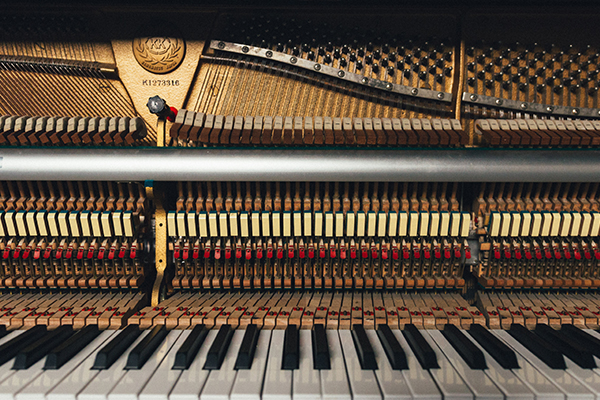It is known to us that many famous people have composed a lot of well-known works and those works have passed down over years. There is no doubt that those well-known works have their exclusive meaning and magic so that they can be passed down generations after generations. As for me, Sonata in C Minor, Op. 30 No.2 for Violin and Piano is right one work that has prevailed over history and it has been learned by students from the past till today. Therefore the following would like to reflect on this work, during which its composer’s information, its composition background, a brief discussion about this work as well as my personal reflection on this work will all be illustrated.
The composer of this song is Ludwig van Beethoven who has altogether written ten sonatas for violin and piano in his late twenties and early thirties from 1797 to 1803 and his life period was from 1770 to 1827 (Chamber Music Northwest. 2019). Though he was unable to cure an incessant ringing in his ears, he still kept creating music regardless of his deafness by authoring the anguished “Heiligenstadt Testament” to lament the demise of his hearing (Chamber Music Northwest. 2019). In this sense, it is not hard to find that his determination to keep working on music can powerfully indicate his persistence to resist his fate.
As a matter of fact, the significance of this work not only lies in that it is related to the rest of his oeuvre but also the context of his masonic associations (Chamber Music Northwest. 2019). To put it more specifically, C minor stands for a symbol of death and it is reserved by earlier composers for only their very darkest works concerning freemasons. For one part, some scholars deem his proclivity toward C minor is the most faithful to his artistic spirit. However for another, other scholars criticize his reflexive levity in choosing that key as a default mode of passion. Based on this, a fair knowledge can be obtained that scholars have actually put forward different evaluations on his work.
As for my personal feelings of this work, what is a must to mention is that this work does provide me a pleasant mood. However, I have to admit that I cannot successfully figure out what provides me a pleasant mood from this work. Maybe it is the quick speed or it is the delightful melody that enables me to gain a good mood from within (Kirill Troussov. 2016). No matter what gives me a good mood, what matters is that this work is really one that can help cure the sorrow of its listeners. So you can have a fair knowledge that I would like to listen to this work over and over again in approaching days in order that I can gain more from within. It is undoubted that I can gain something different from this work in the future because of the gradual accumulation of my personal experience. Maybe I am able to figure out why this work can help provide a happy mood.
To sum up, a reasonable conclusion can be drawn that this work is absolutely one that is worthwhile for the wide public to listen to. Or maybe it can be put in another way that I am willing to recommend this work to others around me in order that this work can as well benefit others. I am sure that they can all learn something from within, which is how the value of this work can be played to the full in the end.

